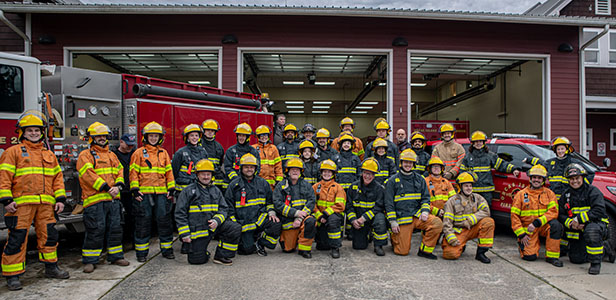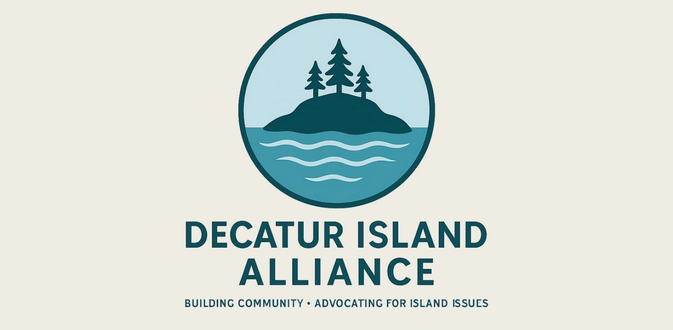Last in a three-part series
County Auditor Milene Henley, CountyAdministrator Pete Rose, Council Members Richard Fralick and Gene Knapp met with Orcas Islanders on Wednesday, Aug. 4 at a Town Hall meeting at the Eastsound Fire Hall.
During the general question period, Tom Zimmerman,who owns two 5-acre parcels between Olga and Doe Bay, complained in a written statement that permits take “an inordinate amount of time; some would like to stop growth altogether.”
He added that “State intervention for state monies is a poor tradeoff.”
Zimmerman also noted that the County Charter is “up for review; we should take a good hard look at the Council and what it has or hasn’t been doing.”
In response to another question from the audience, Fralick said that the County had granted the Eastsound Sewer and Water District (ESWD) $80 to $85 thousand for sewer extension lines on OPAL commons property. He’d was asked if the claims filed for the grant were legitimate and replied that he’d checked on the timing of the grant, and learned “there was no limit on the amount of time in executing their [ESWD] plan.”
Following the question-and-answer period, the meeting moved on to the Critical Areas Ordinance Update. Fralick said with a rueful smile, “Now we deal with the real simple issues.”
He quickly reviewed the 14 goals of the Washington State Growth Management Act (GMA) which San Juan County “opted into” in 1990. “We have to balance the goals and some are mutually exclusive,” Fralick said. Among them were:
1) keep urban growth in urban areas
2) reduce sprawl
3) provide efficient transportation
4) encourage affordable housing
Further, the GMA requires designation of critical areas to protect the ecosystem and property rights; it was amended in 1995 to require local governments to consider the “best available science” (bas), in developing critical areas policies and regulations; but that science was not to be the sole criterion to be used in developing those policies and regulations. Fralick said.
There are no statewide standards, and policymakers should defer to local decision-making, even while the state has requirements and the county has goals, Fralick said, among them the establishment of critical areas “requirements that are balanced and related to impacts” and of funding mechanisms to support protection programs, including voluntary measures.
In San Juan County, the Critical Aquifer Recharge Areas (CARA) portion of the CAO was updated last year, and four areas remain to be updated.
Fralick then reviewed the timeline to accomplish the complete update of the Critical Areas Ordinance.
- In August 2009, the County held a workshop with experts and the public that resulted in a decision this past January to change the normal process of updating an ordinance. They decided because of a 2008 judicial decision concerning Anacortes’ critical areas, to focus on uplands critical areas, and leave the shoreline update until 2012, when the shoreline master plan update is due.
- The Council also considered a resolution adopting best available science in San Juan County, and to consider a “tailored” local approach.
- This spring, the county asked citizens to submit scientific reports for consideration, addressing specific areas of concern such as nonconforming uses, reasonable use exceptions and the reduction of buffers in Urban Growth Areas (UGAs).
- Then, in March 2010 the Washington State legislature changed the laws to clarify integration of the Shoreline Management Act with the Growth Management Act. The impact is that regulations adopted under GMA to protect critical areas will apply within shorelines.
- The Council then agreed to combine the shoreline update with the uplands portions of the CAO update.
- Dr. Paul Adamus was hired to conduct the wetlands and uplands wildlife habitat study, and the “CAO update implementation team” was established.
- The County Critical Areas regulations public participation plan was approved after “extensive public input.”
- Outreach was made to the public to provide additional science regarding the “impacts of land use and development” with a July 23, 2010 deadline.
Request for proposal issued for consultant for ca o and completion of shoreline master plan update both required by state
Fralick then listed future milestones for county action:
- Approve synthesized “Best Available Science” reports by Sept.-Oct, 2010
- Review and revise, if necessary, Critical Areas regulations by June 2011
- Conduct public workshops
- Review and amend by midyear of 2011
Fralick summed up the CAO update process in saying, “The CAO must be updated; best available science must be used; the county has a plan; and once the best available science is reviewed, a plan will be adopted.
“All will profit if we stay involved and participate,” Fralick said. “To get a successful outcome, compromise will be necessary. We will be successful by remembering what brought us here and that we are neighbors long after the CAO update is concluded.”
**If you are reading theOrcasonian for free, thank your fellow islanders. If you would like to support theOrcasonian CLICK HERE to set your modestly-priced, voluntary subscription. Otherwise, no worries; we’re happy to share with you.**







